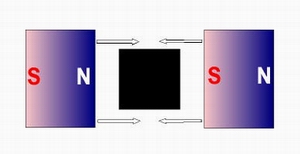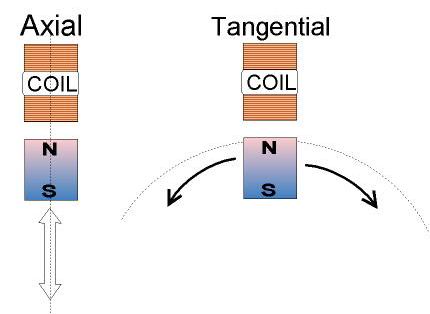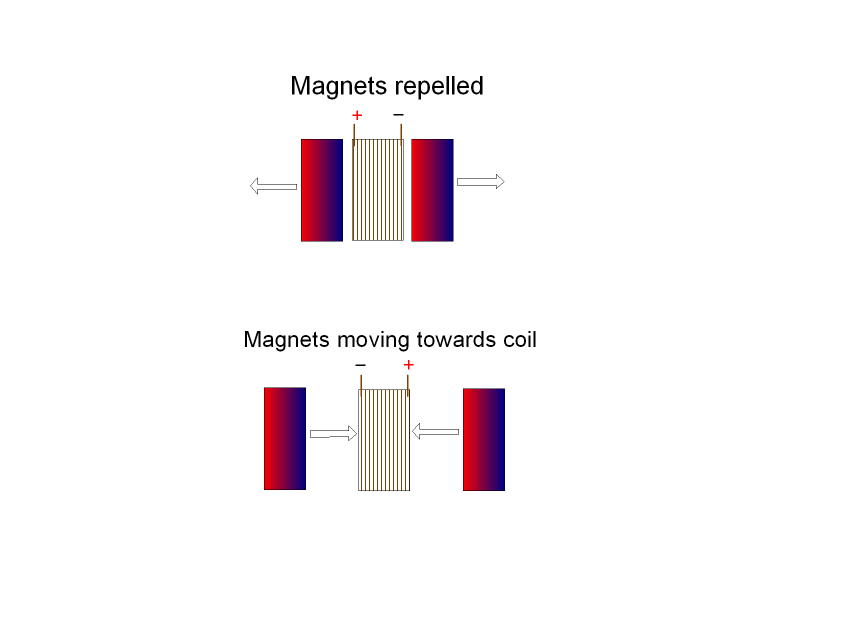EXPLANATION
In the case of the Opposing Piston Motor, the force upon the rotor (crankshaft) is in large part supplied by the attraction force of permanent magnets. These permanent magnets and their holders make up the pistons which are attracted to each other and to the coil core.
 |
An electromagnetic coil is placed between each set of magnetic pistons. The core of the coil is ferric material to which the pistons are attracted. These pistons are oriented so that the North and South poles are facing each other. As the magnetic pistons are attracted and drawn towards each other they become closer to the coil between them.
In a conventional motor, the magnetic fields are at register only at one point in the rotation of the armature. The axial force between two magnets is much greater than the tangential force. The Opposing Piston Motor takes advantage of this axial force by facing the magnets to each other at register moving through a common axis. This applies to the attraction of the two pistons as well as the repulsion. The Opposing Piston Motor uses the coil to repel two magnets and uses two magnets to simultaneously attract to the core of the coil and to each other.

